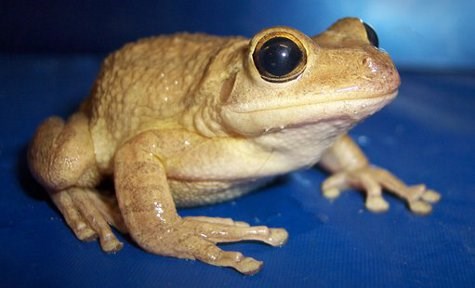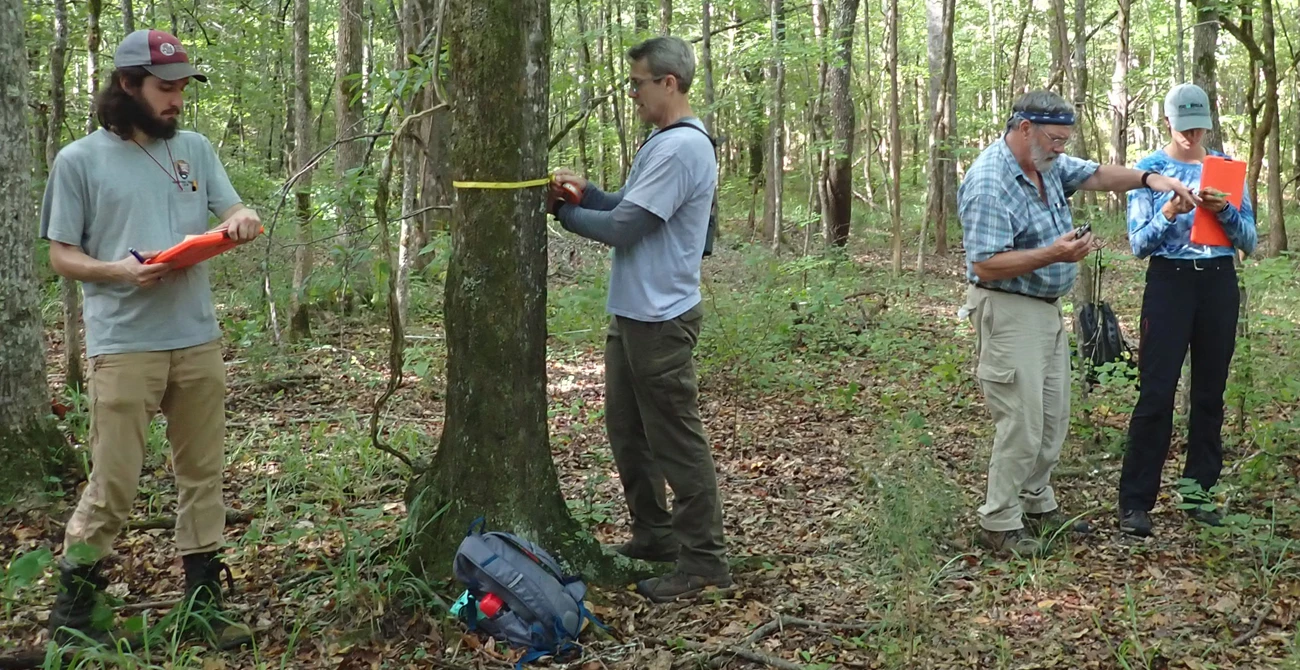Last updated: December 1, 2025
Article
SECN Highlights October 2022


NPS photo / Eric Starkey
Helping Out in the Midwest Region
Aquatic Ecologist Eric Starkey and Physical Scientist Stephen Cooper recently provided wadeable stream channel monitoring field assistance at Knife River Indian Villages National Historic Site and Theodore Roosevelt National Park in North Dakota. Their involvement was a natural fit because the Southeast Coast Network's protocol for stream channel habitat monitoring has been adapted for implementation by the Northern Great Plains Inventory and Monitoring Network (NGPN). Helping in North Dakota allowed the SECN aquatic team to evaluate new technology (i.e., scanning Total Station) and hone skills related to the sometimes tricky identification of geomorphic features. Cross-network collaboration allows the NPS Inventory and Monitoring Division (IMD) to leverage the expertise of staff across the country and provides on the ground educational opportunities for staff from both networks.

NPS photo / Stephen Cooper

Photo by Denise Gregoire, USGS
Finding a Frog
In September, the Southeast Coast Network augmented its regularly scheduled monitoring and deployed six automated recording devices (ARDs) on the south end of Cumberland Island National Seashore. The ARDs will help the network perform follow-up work on a Cuban treefrog (Osteopilus septentrionalis) detection made in previous recordings. Cuban treefrogs are an invasive non-native species that can outcompete many of the native frogs and the finding marks the first documentation of this species on the island. The ARDs will record through the end of the year (Cuban treefrogs breed through October), and monitoring for this species will continue in the spring.
Recent Publications
The Southeast Coast Network recently published the following reports:
- Terrestrial Vegetation Monitoring at Cumberland National Seashore: 2020 Data Summary. Available at: DataStore - Published Report - (Code: 2294287) (nps.gov)
-
Resource Brief for Terrestrial Vegetation Monitoring at Cumberland Island National Seashore: 2020 Data Summary. Available at: DataStore - Resource Brief - (Code: 2287439) (nps.gov)

NPS photo / M. Forbes Boyle
Tags
- knife river indian villages national historic site
- theodore roosevelt national park
- northern great plains network
- wadeable stream habitat monitoring
- cuban treefrog
- automated recording devices
- cumberland island national seashore
- horseshoe bend national military park
- vegetation community monitoring
- cumberland piedmont network
- surface elevation table
- cape hatteras national seashore
- cape lookout national seashore
- shoreline change monitoring
- canaveral national seashore
- timucuan ecological and historic preserve
- fort matanzas national monument
- hurricane ian
- moores creek national battlefield
- congaree national park
- ocmulgee mounds national historical park
- chattahoochee river national recreation area
- kennesaw mountain national battlefield park
- fixed station water quality
- park-wide assessments
- water quality monitoring
- fort pulaski national monument
- landbird community monitoring
- vocal anuran community monitoring
- fort frederica national monument
- fort sumter and fort moultrie national historic park
- secn network highlights
